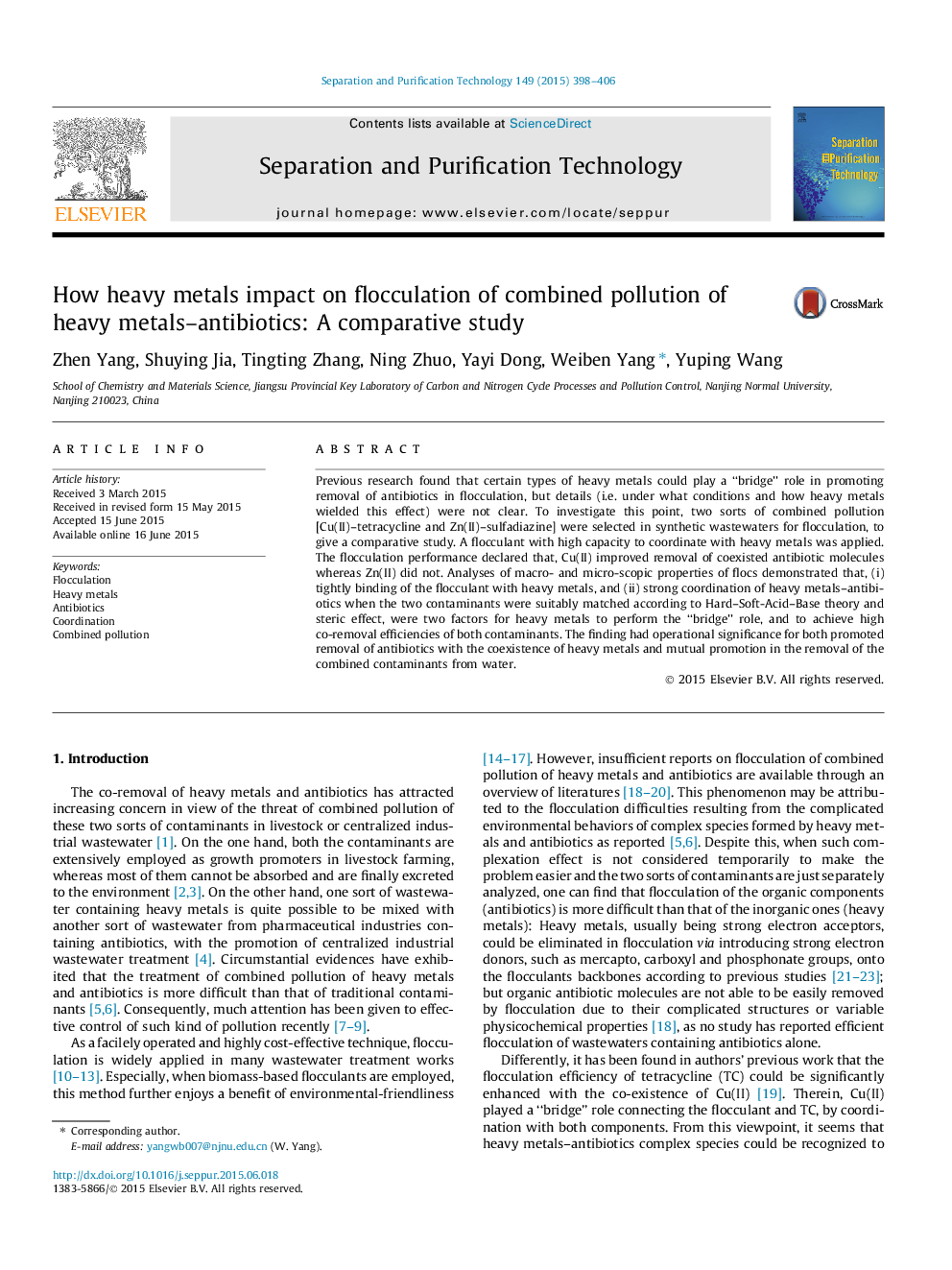| کد مقاله | کد نشریه | سال انتشار | مقاله انگلیسی | نسخه تمام متن |
|---|---|---|---|---|
| 640603 | 1456970 | 2015 | 9 صفحه PDF | دانلود رایگان |
• Cu(II) plays a “bridge” role in promoting removal of antibiotics, but Zn(II) cannot.
• One factor for the “bridge” role is tightly binding of flocculant–heavy metals.
• The other key factor is strong coordination of heavy metals–antibiotics.
• Hard–Soft-Acid–Base theory and steric effect determine the coordination intensity.
Previous research found that certain types of heavy metals could play a “bridge” role in promoting removal of antibiotics in flocculation, but details (i.e. under what conditions and how heavy metals wielded this effect) were not clear. To investigate this point, two sorts of combined pollution [Cu(II)–tetracycline and Zn(II)–sulfadiazine] were selected in synthetic wastewaters for flocculation, to give a comparative study. A flocculant with high capacity to coordinate with heavy metals was applied. The flocculation performance declared that, Cu(II) improved removal of coexisted antibiotic molecules whereas Zn(II) did not. Analyses of macro- and micro-scopic properties of flocs demonstrated that, (i) tightly binding of the flocculant with heavy metals, and (ii) strong coordination of heavy metals–antibiotics when the two contaminants were suitably matched according to Hard–Soft-Acid–Base theory and steric effect, were two factors for heavy metals to perform the “bridge” role, and to achieve high co-removal efficiencies of both contaminants. The finding had operational significance for both promoted removal of antibiotics with the coexistence of heavy metals and mutual promotion in the removal of the combined contaminants from water.
Cu(II) played the “bridge” role in promoting antibiotic removal due to strong coordination effect, whereas Zn(II) could not, when MAC was applied as the flocculant.Figure optionsDownload as PowerPoint slide
Journal: Separation and Purification Technology - Volume 149, 27 July 2015, Pages 398–406
